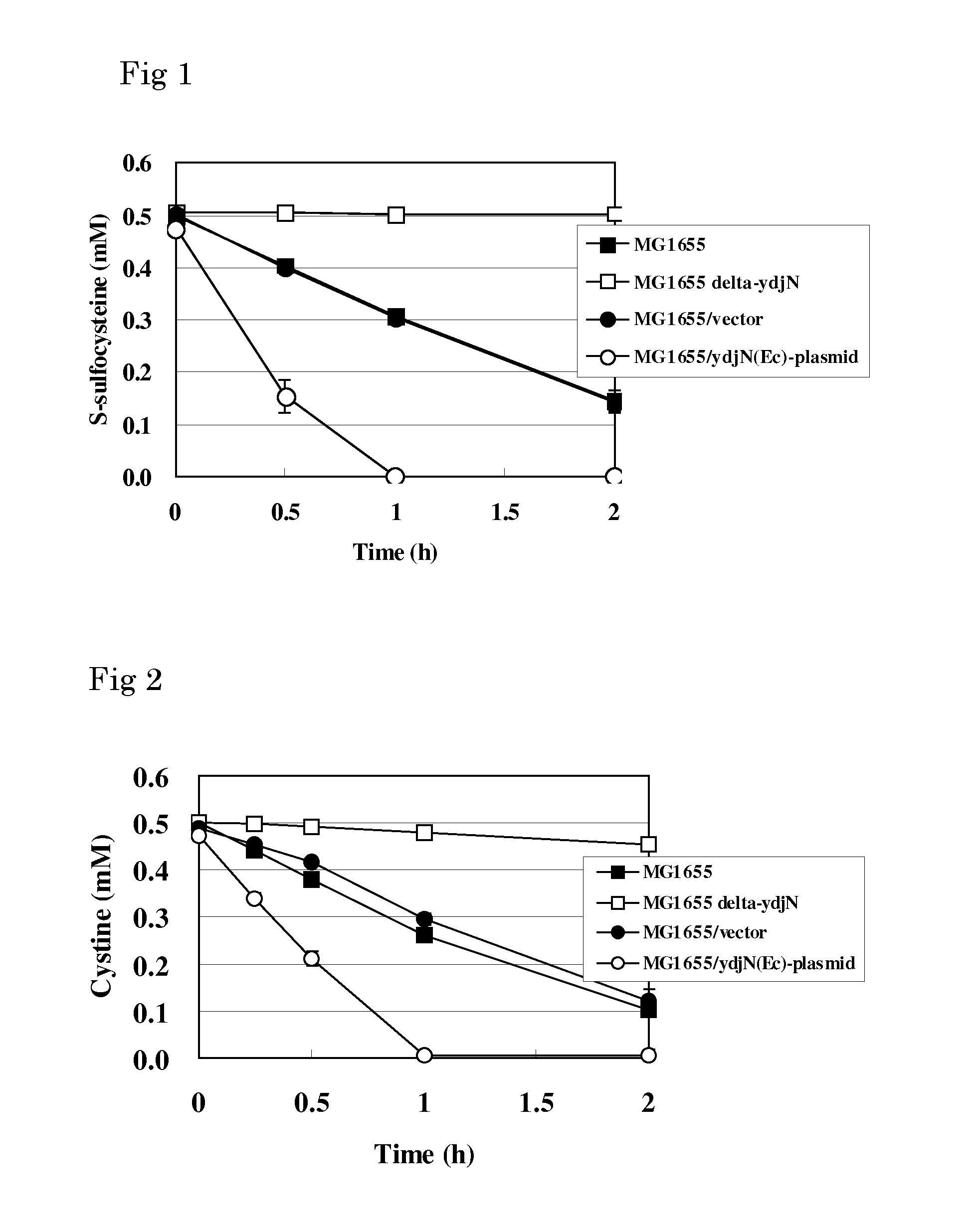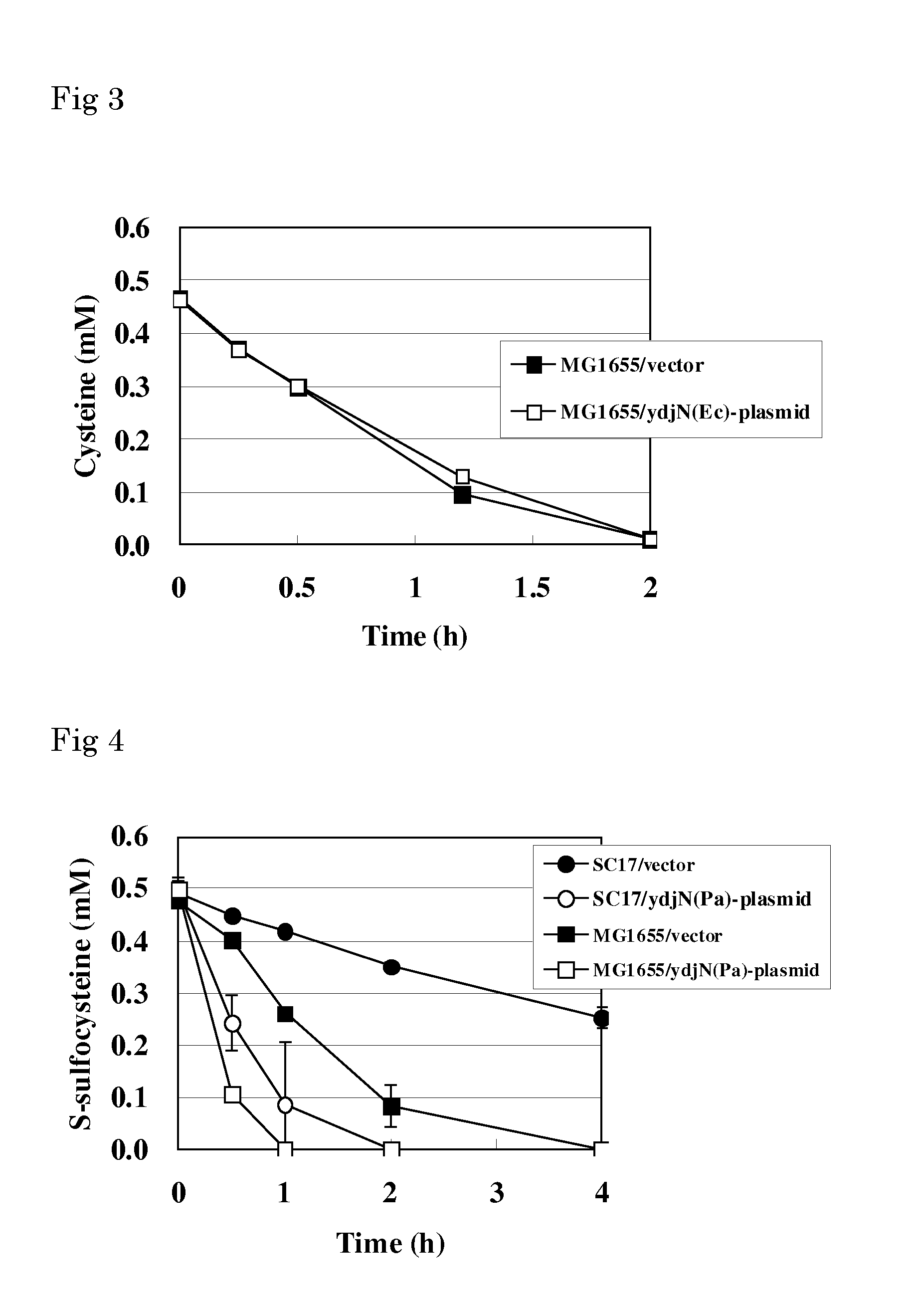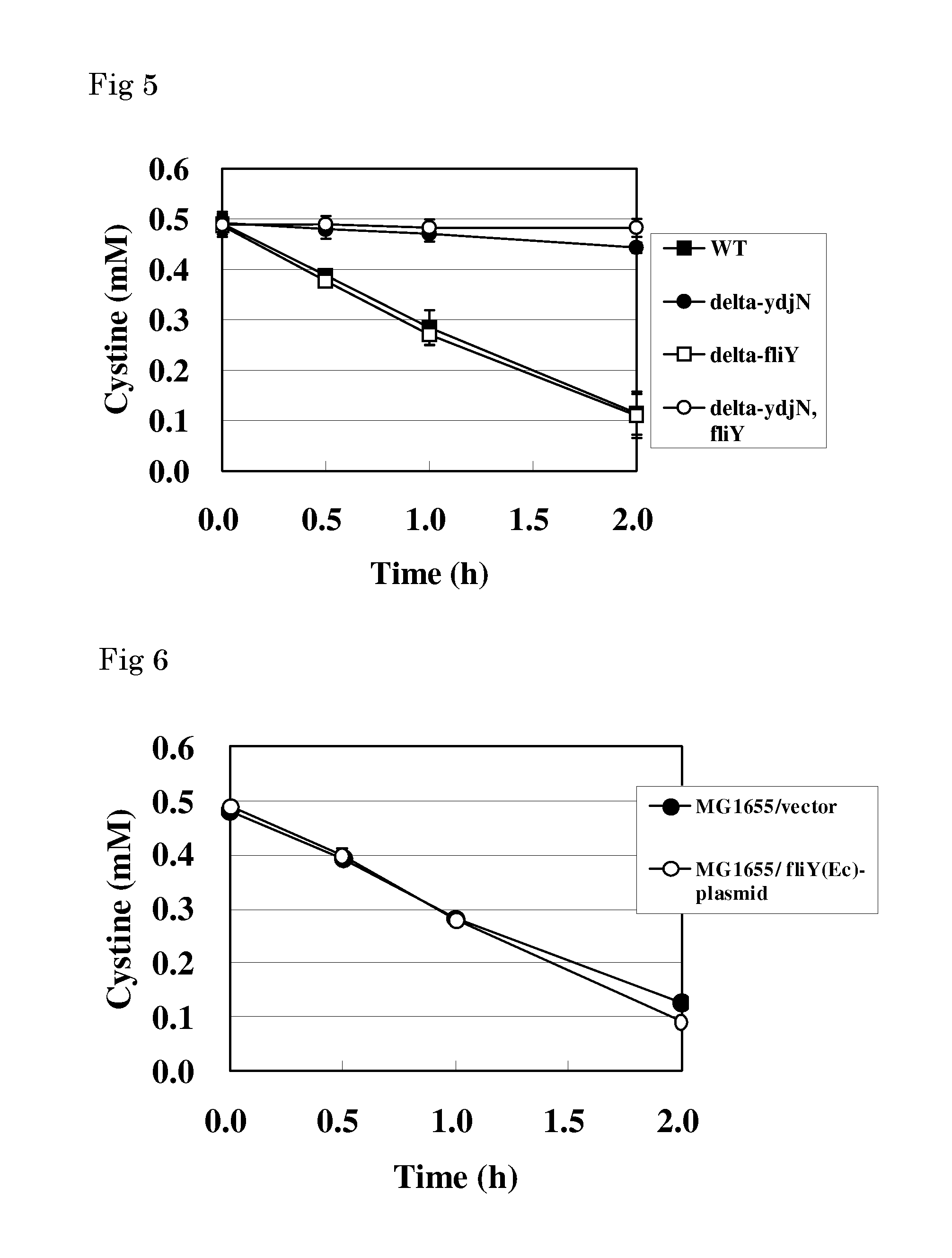L-cysteine-producing bacterium and a method for producing l-cysteine
a technology of lcysteine and bacterium, which is applied in the field of lcysteine-producing bacteria and a method for producing lcysteine, can solve the problems of difficult identification of transporter function, complex functions and physiological roles of transporters, and characteristics that may not adequately reflect physiological functions as actual transporters, so as to improve the ability of lcysteine-producing bacteria belonging to the family enterobacteriacea
- Summary
- Abstract
- Description
- Claims
- Application Information
AI Technical Summary
Benefits of technology
Problems solved by technology
Method used
Image
Examples
example 1
Identification of a Protein which has an Activity of Taking Up Cysteine or Cystine
[0131](1) Acquisition of Mutant Strain Unable to Utilize S-Sulfocysteine as a Sole Cysteine Source
[0132](1-1) Acquisition of a Strain from E. coli MG1655 Strain (ATCC No. 47076) which Lacks the cysE Gene.
[0133]The cysE gene was deleted by the method called “Red-driven integration” developed by Datsenko, Wanner et al. (Proc. Natl. Acad. Sci. USA, 2000, vol. 97, No. 12, pp. 6640-6645) and the excisive system derived from λ phage (J. Bacteriol., 2000, 184, 5200-5203 (2002)). According to the Red-driven integration, a gene-disrupted strain can be constructed in one step by using a PCR product obtained with synthetic oligonucleotides designed so as to have a part of the objective gene on the 5′ side, and a part of an antibiotic resistance gene on the 3′ side. By further combining the excisive system derived from λ-phage, the antibiotic resistance gene incorporated into the gene-disrupted strain can be elimi...
example 2
Cysteine production by ydjN and / or fliY-Deficient E. coli
[0163](1) Construction of Cysteine-Producing E. coli Strain
[0164]In order to impart the ability to produce cysteine to a ydjN- and / or fliY-deficient E. coli strain, a plasmid containing a mutant cysE coding for a mutant serine acetyltransferase with reduced feedback inhibition by L-cysteine (U.S. Patent Published Application No. 2005 / 0112731(A1)) was constructed. Specifically, a pACYC-DE1 plasmid was constructed according to the method for constructing pACYC-DES described in Japanese Patent Laid-open No. 2005-137369 (U.S. Patent Published Application No. 2005 / 0124049(A1), EP 1528108(A1)) except that the step of incorporating a mutant serA5 gene coding for a phosphoglycerate dehydrogenase desensitized to feedback inhibition by serine (described in U.S. Pat. No. 6,180,373) was omitted. While the plasmid pACYC-DES carried the aforementioned mutant serA5, the gene coding for the mutant SAT desensitized to feedback inhibition, the...
example 3
Production of Cysteine by P. ananatis Deficient in ydjN and / or fliY
[0177](1) Preparation of Cysteine-Producing P. ananatis EYPS1976(s) Strain
[0178]A cysteine-producing bacterium of P. ananatis was constructed by introducing cysE5 coding for a mutant serine acetyltransferase (U.S. Patent Published Application No. 2005 / 0112731), serA348 coding for a mutant 3-phosphoglycerate dehydrogenase (J. Biol. Chem., 1996, 271 (38):23235-8), and enhancing yeaS coding for a secretion factor for various amino acids (Japanese Patent Laid-open No. 2000-189180) and the cysPTWA cluster coding for a sulfur source uptake factor. The details of the construction method are described below.
[0179](1-1) Introduction of CysE5 and YeaS into P. ananatis SC17 Strain
[0180]First, a plasmid for constructing the aforementioned strain was constructed. The method for it is described below.
[0181]By PCR using the chromosomal DNA of E. coli MG1655 (ATCC No. 47076) as the template as well as P1 (agctgagtcg acccccagga aaaat...
PUM
 Login to View More
Login to View More Abstract
Description
Claims
Application Information
 Login to View More
Login to View More - R&D
- Intellectual Property
- Life Sciences
- Materials
- Tech Scout
- Unparalleled Data Quality
- Higher Quality Content
- 60% Fewer Hallucinations
Browse by: Latest US Patents, China's latest patents, Technical Efficacy Thesaurus, Application Domain, Technology Topic, Popular Technical Reports.
© 2025 PatSnap. All rights reserved.Legal|Privacy policy|Modern Slavery Act Transparency Statement|Sitemap|About US| Contact US: help@patsnap.com



